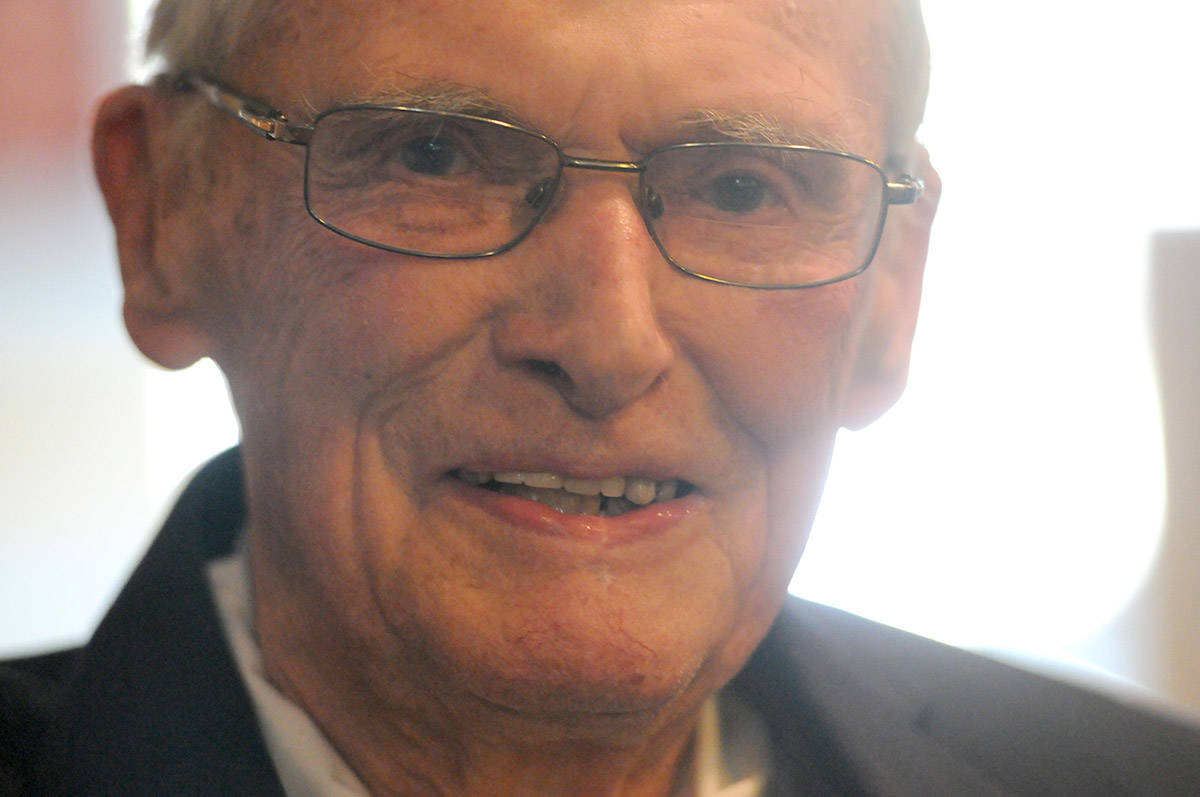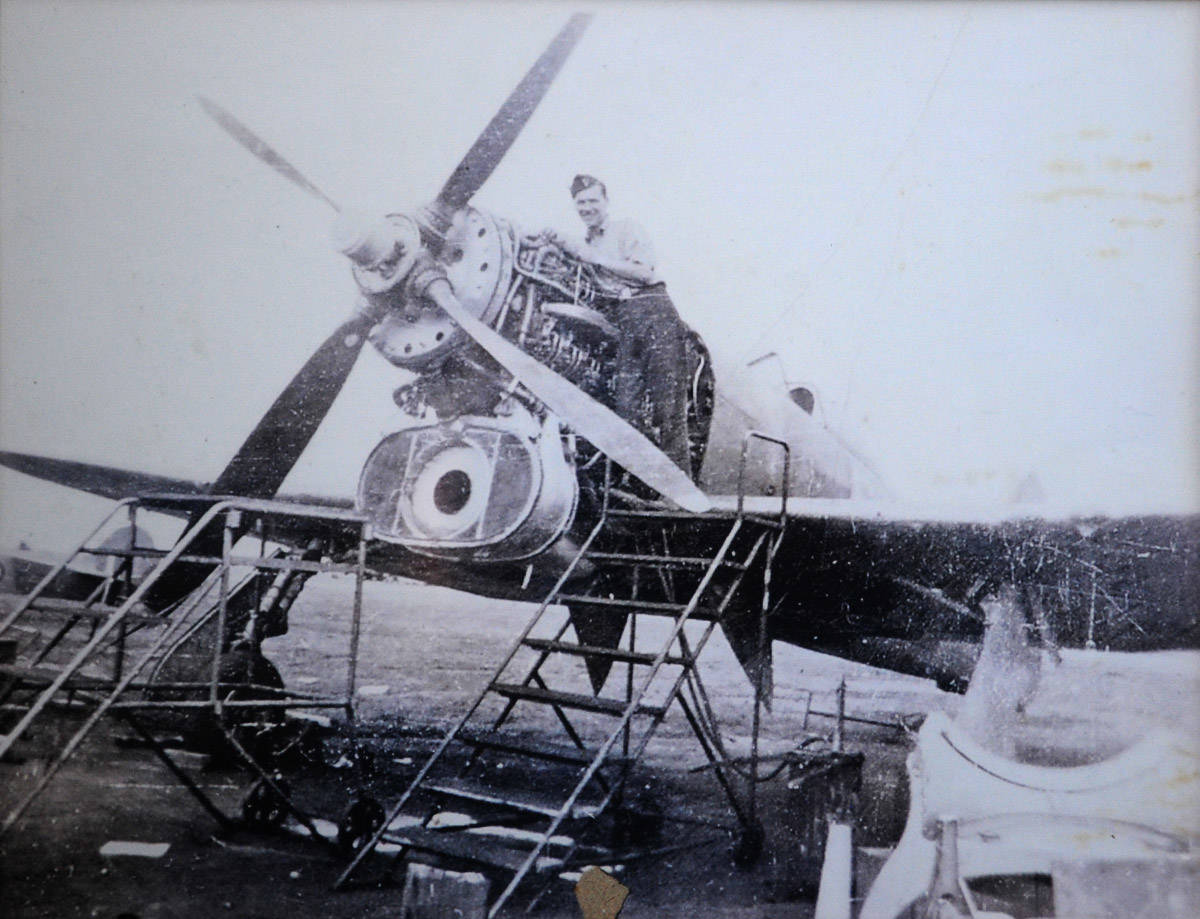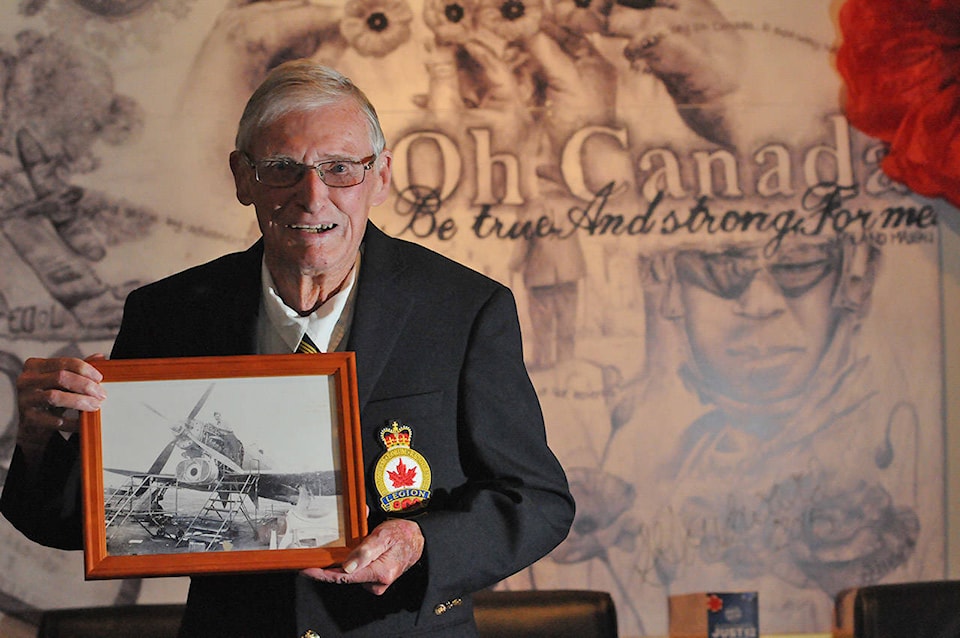Warner Hockin remembers precisely where he was in early June of 1944, when the invasion started in Normandy.
“I had a 48-hour pass in my pocket, and I was going to see some family in Brighton (England), on the coast,” he says.
The 94-year-old veteran is sipping on some white wine at his favourite haunt, Chilliwack’s Royal Canadian Legion, Branch 4, and he’s re-telling some of his favourite stories of the Second World War. The group gathered at his table smile one minute and laugh uproariously another. Once in a while, they tear up and nod with reverence. But they also are beaming with pride.
You see, Hockin is one of about 50 Canadian D-Day veterans who have been invited to Normandy, to visit Juno Beach and commemorate 75 years since the beginning of the end of that war. So naturally, his first story starts with how he got to Normandy.
“I was on the train,” he slowly continues. He clamps a hand to his thigh, right where that pass to temporary freedom would have been. “Two big servicemen, policemen, came up and said ‘Let’s see your pass. The invasion has started.’”
So he didn’t get to visit family that day, or for a long while. He was heading to Normandy, where he would be for about a month and a half. His first stop was Farnham, and then onto the landing barges.
“There was a terrible windstorm and we couldn’t park the trucks,” he says. “But I said ‘Oh, I’m glad to get away from here.’ The Germans were dropping these buzz bombs all over the place.”
Buzz bombs, as the Allies called them, were V-1 flying bombs that weighed more than 2,000 kg, and more than 9,500 were launched by the Luftwaffe in 1944. They detonated instantly on first impact.
But it wasn’t a buzz bomb that caused the closest call for Hockin. He was there with the Royal Canadian Air Force, as part of the ground crew. Once his ship got to the coast of occupied France, they dropped anchor about three miles off shore.
“When we went to go in, in the morning, we couldn’t move. We were stuck there for two nights and two days,” he says. Their anchor had become hitched on something, but it was going to take some time to free it.
“Everyone was going, but there we sat.”
The ship beside them, which had a crane operator they called Beaver for his two buck teeth, was hit by enemy fire. The crane went down, and they assumed their friend went with it.
“Beaver’s gone in the ocean,” he recalls saying. “He’s done.”
Then at one point, something hit a cable high above him.
“Two hundred feet of cable dropped onto the deck right in front of my feet,” he said. Desperate to get off the barge, Hockin also worried about another danger — he couldn’t swim, and this was not a placid summer lake, but the frigid English Channel, and an active war zone.
“When I got off the barge,” he says, laughing, “the water only came up to my knees!”
From there, they trooped onto the beach and following a rough map, made their way along a sandy trail in search of the B9 Airfield. In the Second World War, farmers’ fields and other large, grassy areas were repurposed by Allied forces into makeshift airfields called Advanced Landing Grounds. The European landscape today is filled with these former sites, and B9 is in Lantheuil, France.
“We had to go find it,” Hockin says, adding that it was just a few kilometres from the beaches. “It took us two days to find it and when we finally got to the airfield, the English engineers had already prepared it.”
But being on ‘home base’ was no guarantee of safety. At one airfield, a 500-pound bomb on an RCAF Spitfire came loose as it took off overhead.
“It knocked me over and I was senseless for a few minutes. My buddy was 30 yards away. He was killed,” he says, looking up around the table. “You’ve got to live with that stuff.”
It was a death that hit home for him, as the man killed had a twin brother on the same unit. Hockin also is a twin to his sister Mildred, and they grew up together in Rosedale. She’s passed away now, and he says there is nothing like losing a twin.
And it was that close family he came home to, eventually. While we think of D-Day as the end of the war, it took many soldiers much longer to leave Europe. It’s called repatriation, and it means going home for good.
Six months after D-Day, Hockin was working in RAF Topcliffe and handing out blankets to fellow soldiers in warm, dry office space.
“I was thinking, ‘my repat number has to come up one of these days.’”
Instead, on Dec. 24, 1944, he was told to pack his kit. He was heading back to occupied Germany. It would be March of 1946 before he came home.
There were hard tasks to be done, to help settle European countries after the destruction of war. But there were good times, like when he caught sight of Beaver driving a truck, alive after all.
The happiest times he recalls were in Lubeck, Germany.
“That was a nice town,” he says. “It was bombed a couple times but it was pretty well preserved.”
But nothing was as beautiful to him as home.
“Rosedale looked pretty good!” he says. “I said to them, ‘I’m glad you got me back here and I’m never leaving Chilliwack — and I haven’t.”
He married Mary Foster, and they raised five children together. Their son Tim, 60, is taking the trip to Normandy with him.
For work after the war, Hockin drove a truck delivering oil to service stations and farms for British American Oil. For fun, he and Mary kicked back at the Legion. He recalls good times, when the Legion was on Fourth Avenue. They would go dancing and enjoyed their freedom with fellow veterans and spouses.
It was a happy and carefree time.
“That was supposed to be the end of the wars,” he says. “There’s been 500 more since the end of that war.”
Hockin never spoke much of the war once he got home, he says, and he regrets not visiting Normandy sooner, before he needed the assistance of family, nurses and doctors to make the trip. Their itinerary is packed with tours, meals and visits with dignitaries.
“I’m only good for two or three blocks,” he says. “I left it too late. I’m too old.”
He’s happy to see people continuing to share stories about the realities of war, and has noticed that younger generations are starting to ask more questions about it. And so he’s happy to share his own stories, even the more painful ones.
“Memories are short,” he says, “But they are doing a lot of work in the schools. I’m really happy people are carrying on with traditions, like the poppy campaign.”


